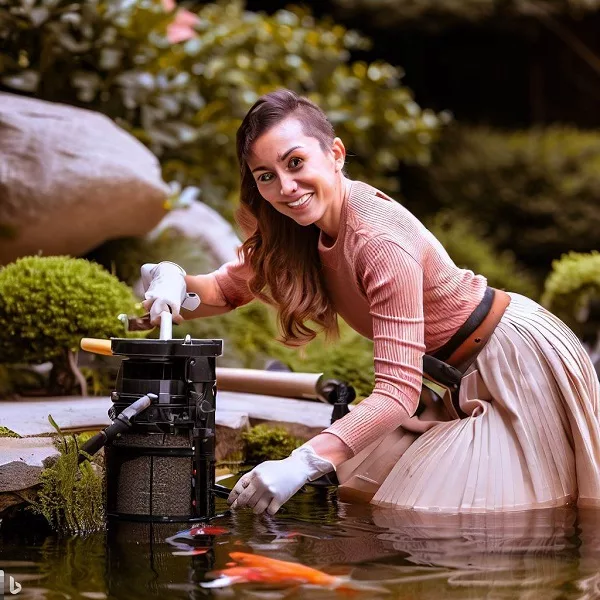
Koi ponds are a beautiful addition to any backyard, but they require regular maintenance to ensure that the water stays clean and healthy for the fish. One of the most important components of a koi pond is the filter, which helps to remove debris and maintain the water quality. However, like any piece of equipment, koi pond filters can experience issues that require troubleshooting. Here are some common issues with koi pond filters and how to troubleshoot them.
- Low Water Flow
If you notice that the water flow in your koi pond is low, it may be due to a clogged filter. Debris can accumulate in the filter, causing the water to back up and reduce the flow. To fix this issue, turn off the pump and disconnect the filter. Remove any debris or dirt from the filter and rinse it with clean water. Reassemble the filter and turn the pump back on. If the water flow is still low, check the pump for any issues.
- Cloudy Water
Cloudy water in a koi pond can be caused by a few different factors, including overfeeding, high levels of ammonia or nitrites, or a dirty filter. If you notice cloudy water, first check the water quality with a test kit. If the levels of ammonia or nitrites are high, do a partial water change to dilute the levels. Additionally, clean the filter to remove any buildup of debris that could be contributing to the cloudiness.
- Algae Growth
Algae growth in a koi pond is a common issue that can be caused by a variety of factors, including too much sunlight, high nutrient levels, or a dirty filter. To troubleshoot this issue, first check the amount of sunlight the pond receives. If necessary, provide some shade to reduce the amount of direct sunlight. Additionally, test the water for high nutrient levels and do a partial water change if necessary. Finally, clean the filter to remove any debris that could be contributing to the algae growth.
- Pump Issues
If you notice that the pump is not working properly, it may be due to a clogged impeller or a faulty motor. To troubleshoot this issue, first turn off the pump and disconnect it from the electrical source. Remove the impeller and clean it to remove any debris that may be causing it to be clogged. If the impeller is clean and the pump still does not work, it may be necessary to replace the motor.
- Strange Noises
Strange noises coming from the filter or pump can be a sign of an issue. This could be due to a clogged filter, a loose impeller, or a faulty motor. To troubleshoot this issue, first turn off the pump and disconnect it from the electrical source. Check the filter for any debris that could be causing the noise. Additionally, check the impeller to ensure that it is properly seated and not loose. Finally, if the noise persists, it may be necessary to replace the motor.
In conclusion, koi pond filters require regular maintenance to ensure that they are working properly. By troubleshooting common issues, you can keep your koi pond clean and healthy for your fish. Remember to test the water quality regularly and clean the filter as needed to prevent issues from developing. With proper care and maintenance, your koi pond will be a beautiful and relaxing addition to your backyard.
